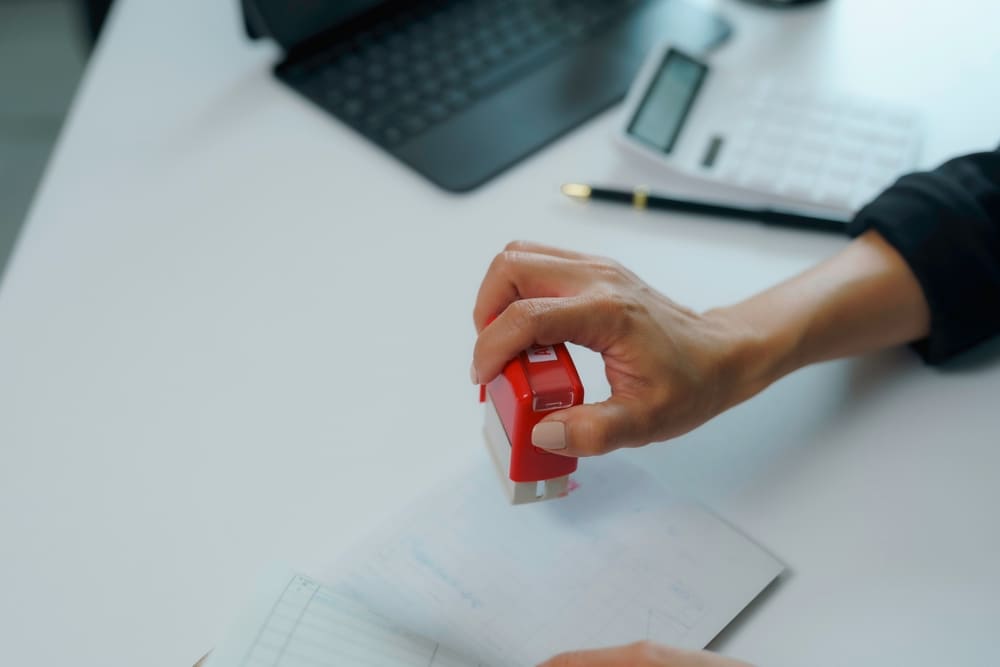
The suppressor tax stamp removal takes effect on January 1, 2026, and it means that firearm owners will no longer be required to pay the long-standing $200 federal suppressor tax stamp when purchasing a new suppressor or other NFA items.
This update dramatically lowers the cost barrier, simplifies the process, and makes buying a suppressor far more accessible than ever. If you’re planning on adding a suppressor to your kit, or you’ve been stuck in tax-stamp limbo before this change, this guide breaks down exactly what to expect.
The core change is simple: as of January 1, 2026, the federal requirement to pay the $200 suppressor tax stamp is eliminated for qualified buyers. This change was included within the broader federal reform package known as H.R.1 – One Big Beautiful Bill Act.
Since 1934, suppressors have been regulated under the National Firearms Act (NFA). For nearly a century, the purchasing process required:
Note: The suppressor tax stamp removal does not eliminate this oversight—it simply removes the tax component and streamlines the process. ATF Rules and Regulations remain in place.

The announcement has led to confusion, so it’s worth breaking down exactly what changes—and what doesn’t—on the suppressor tax stamp removal effective date.
Broad legislative reform and pressure to modernize the NFA system are responsible for the shift. Congressional briefing documents, such as The National Firearms Act and P.L. 119-21, highlight long-standing problems with the NFA queue, outdated workflows, and public frustration.
Despite changes to the suppressor tax stamp in 2026, several essential elements remain unchanged:
Suppressors remain federally regulated devices. This means:
State suppressor laws are not changing. Some states completely prohibit suppressor ownership, allow ownership but restrict hunting use, or allow both ownership and hunting use.
Interstate transport must still follow federal firearm transport guidelines, and local restrictions (parks, municipalities, wildlife units) remain in effect.
States will continue to set and enforce their own wildlife regulations.
With the tax stamp gone, the suppressor purchasing process becomes far more streamlined. While ATF is still finalizing certain procedural details, the general buyer experience is expected to look like this:
Select your suppressor model, which must be purchased from a Federal Firearms Licensee (FFL) who has Special Occupational Tax (SOT) status for NFA items.
You’ll be required to fill out the appropriate ATF forms, typically the ATF Form 4 (Application for Tax Paid Transfer and Registration of Firearm) or Form 1 if you’re planning to manufacture your own.
Applicants must still undergo background checks through the National Instant Criminal Background Check System (NICS), submit two sets of fingerprints (either electronically or on FD-258 cards), and include a passport-style photograph.
Starting January 1, 2026, you won’t need to pay the $200 tax when submitting your application. The application form will be updated to indicate a $0 tax for these items.
Your submission will be reviewed by the ATF, and the NFA item must stay with the dealer until your application is approved.
Once you receive approval, you will fill out a standard ATF Form 4473 (firearm transaction record) at the dealer’s location and take your new suppressor home.
Even after the suppressor tax stamp removal, suppressors will NOT ship directly to buyers’ homes. They must still be transferred to a Federal Firearms License (FFL) dealer who has their Special Occupancy Tax (SOT), where your background check is completed. This remains unchanged from the current federal law.

For backcountry hunters, the suppressor tax stamp removal represents more than a $200 savings. Those who enjoy spending long days in steep terrain or remote country will soon enjoy the following benefits and changes:
Backcountry hunters often obsess over every ounce in their pack. Removing the tax stamp barrier makes it far easier to justify adding a lightweight titanium suppressor to your setup.
With lower cost and faster access, suppressor use is expected to increase dramatically across western and mountain hunting communities.
Suppressors reduce muzzle blast, and enhance shot consistency by reducing recoil—critical advantages for those who enjoy long-range hunting.
Industry analysts expect that within just a few seasons, suppressors will become standard equipment for many Western hunters.
The 2026 rule change has left many current applicants wondering how their pending Form 4 submissions will be handled. While official ATF guidance is still developing, here’s what buyers should expect based on current policy direction and industry reporting.
Final guidance will depend on how ATF interprets the transition once the tax stamp requirement is officially eliminated. Some legislative proposals include refund provisions, while others do not. Until ATF publishes a formal directive, assume there will be no automatic refund.
Current expectations based on industry analysis:
For late 2025 buyers, the decision usually comes down to:
Dealers expect a major surge in demand as January approaches. That means shops may begin experiencing stock shortages, longer transfer queues, and higher competition for popular suppressor models. For this reason, many buyers are choosing to purchase now under the current system and secure inventory before the rush.
The suppressor tax stamp removal taking effect on January 1, 2026 represents a historic shift for hunters, long-range shooters, and anyone exploring suppressed firearm platforms. With the elimination of the $200 tax and a simplified purchasing system, suppressors are poised to become standard gear across the backcountry.
If you’re planning ahead, now is the perfect time to research options, compare features, and understand how the 2026 rules will shape your buying experience.
If, on the other hand, you want to take advantage of the short approval times and inventory availability before the surge, Divide Gun Company offers top-tier suppressors to match your rifle setup.